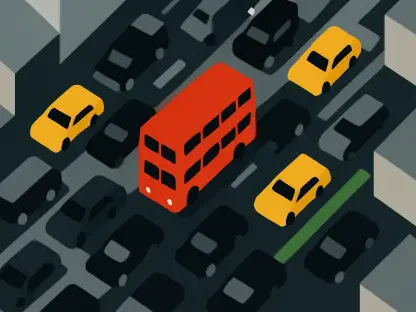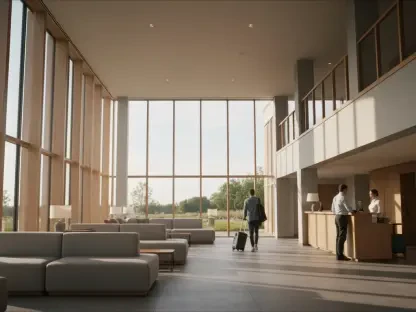What if the skies were no longer reserved for a select few, but open to anyone with a dream to fly? Airhart Aeronautics, a Los Angeles-based innovator, has just secured a transformative round of funding in 2025 to make personal flight as intuitive as driving a car. This financial boost marks a turning point, promising to redefine how millions perceive and access aviation. With nearly 300 million Americans living within a short distance of local airports, yet only 0.2% holding pilot licenses, the gap in accessibility is staggering. This development isn’t just about technology—it’s about unlocking a new era of mobility.
The Urgent Need for Aviation for All
The significance of this funding extends beyond a single company’s ambition. Aviation remains an elite domain, inaccessible to the vast majority despite its potential to transform personal and local connectivity. As urban congestion clogs roads and digital solutions reshape industries, the need for alternative transportation has never been more pressing. Airhart Aeronautics aims to bridge this divide, targeting a future where flying isn’t a luxury or a complex skill, but a practical option for everyday people. This investment validates a vision that could enhance infrastructure and empower communities through the skies.
A Visionary Roadmap to Transform Flight
Airhart’s strategy to revolutionize personal aviation unfolds in a meticulously planned three-phase approach. The first phase centers on the Airhart Avionics platform, a cutting-edge system designed to simplify piloting with an adaptive, intelligent interface. This technology prioritizes safety and ease, ensuring compatibility with a wide range of aircraft setups. It’s a foundational step toward making cockpits less intimidating for newcomers, addressing one of the biggest barriers to entry in aviation.
The second phase shifts focus to market integration, rolling out the avionics suite for experimental and Light Sport Aircraft (LSA) models. This stage aligns with the FAA’s anticipated MOSAIC regulation, which is set to expand certification options for modern aircraft between 2025 and 2027. By developing installation strategies and pilot training ecosystems, Airhart ensures that adoption is seamless, paving the way for broader acceptance among aviation enthusiasts and professionals alike.
Looking further ahead, the third phase introduces the Airhart Aircraft, a next-generation design featuring a proprietary fly-by-wire system. Built on insights from earlier avionics integrations, this aircraft promises to redefine personal flight with unparalleled accessibility. Each phase builds on the last, blending immediate innovation with a long-term goal to reshape how individuals engage with aviation.
Digital Flight: The Industry’s New Frontier
Industry leaders see digital technology as the cornerstone of aviation’s future, and Airhart stands at the forefront of this shift. Founder and CEO Nikita Ermoshkin has articulated a clear mission, stating, “The avionics architecture connects today’s varied aircraft with tomorrow’s digital designs, keeping pace with changing standards.” This aligns with a growing trend toward simplified interfaces and digital flight controls, bolstered by regulatory updates like MOSAIC.
Experts in general aviation note that such advancements could drastically lower entry barriers. With safety and intuition embedded in Airhart’s systems, the potential to increase the number of licensed pilots is significant. The recent funding underscores the timeliness of this approach, positioning the company to lead a pivotal transformation in how flight is perceived and experienced across the sector.
Real-World Impact on Aspiring Pilots
For those dreaming of taking to the skies, Airhart’s innovations offer tangible opportunities to get involved. The Avionics platform, soon to be integrated across various aircraft, could reduce the steep learning curve traditionally associated with piloting. Its user-friendly design aims to make initial steps into aviation less daunting, providing a practical entry point for novices.
As the second phase unfolds, pilot training ecosystems will emerge, offering structured support for skill development. These programs are crafted to ease the transition for new and seasoned aviators alike, ensuring that the technology is not just innovative but also approachable. Staying informed about these initiatives can provide a direct way to engage with the evolving landscape of personal flight.
The eventual launch of the Airhart Aircraft will mark a defining moment, offering a glimpse into a future where flying feels as natural as any other form of transport. Keeping track of these milestones allows anyone interested—whether a curious beginner or an experienced pilot—to witness and potentially participate in a groundbreaking shift in mobility.
Reflecting on a Milestone Achievement
Looking back, Airhart Aeronautics’ successful funding round stood as a catalyst for reimagining personal aviation. The commitment to safety, accessibility, and digital innovation through the Avionics platform and beyond sparked meaningful progress in the industry. Each step of their phased approach addressed distinct challenges, from simplifying cockpits to designing aircraft for the masses.
As the journey continued, the focus shifted to actionable engagement. Aspiring pilots and aviation enthusiasts were encouraged to explore training opportunities and monitor advancements in aircraft integration. Staying connected with these developments offered a chance to be part of a movement that reshaped transportation. Ultimately, this chapter in Airhart’s story laid a foundation for broader access to the skies, inviting reflection on how technology could unlock new horizons for future generations.









